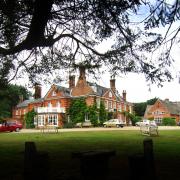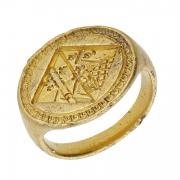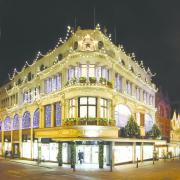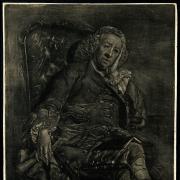Many small towns had their own jails in Victorian times; Neil Haverson takes us into the grim world of Wymondham's Bridewell
George Coles was a 17-year-old labourer. He was up before the court for stealing nine apples, value two pence.
“Serious offence,” declared the magistrate. “Ten days hard labour.”
Age made no difference to a sentence. Charles Goldsmith was just 12 years old. His offence was stealing pears from an orchard. To us in the 21st century this may seem no more than mischievous scrumping but this was the 18th century and the magistrate was uncompromising.
“Fourteen days hard labour,” he pronounced.
Nor was gender taken into account. Twenty-year-old Elizabeth Parsons had stolen a shawl and a pair of cotton stays value three shillings and sixpence. She received one month’s hard labour.

At the other end of the age scale was Betty Penfold. Aged 72 she appeared before the court charged with fortune telling. The magistrate considered this a serious offence and handed down a sentence of one month in prison.
The sentences were to be served in Wymondham Bridewell, a house of correction since the 16th century. The early Bridewell was administered with severity and brutality, with little regard for the welfare of the inmates. But what sort of life could these prisoners look forward to in the 18th century?
Prison reformer John Howard had visited Wymondham in 1779 and declared The Bridewell: “The most vile prison in England.” As a result, local man Sir Thomas Beevor had the prison rebuilt to John Howard’s standards and Wymondham Bridewell became the model for prisons throughout the UK and America.
In 1825 The Bridewell became a female only house of correction. In 1837, an inspector found the prison “clean and orderly” with the surgeon reporting that health of the prisoners was good.

The census of 1851 reveals there were 18 women in The Bridewell. They came from as far afield as London and Ireland. Among them was 21-year-old Ann Gibson from East Harling; occupation, “Lewd woman”. She had her five-month-old daughter Rhoda with her. Ten inmates were described as “Lewd woman”. Other occupations included washerwoman, vagrant and needleworker.
The Bridewell is now the home of Wymondham Heritage Museum where visitors can see evidence of the history of the building; the dungeon, the old cell door dating from 1810 and brickwork showing where the cells were originally situated.
For more information about Wymondham Heritage Museum and details of opening times got to thewhm.org.uk

A prisoner’s life
Beevor’s Bridewell opened in 1785 and was more humane. Prisoners received clean straw for their cell weekly and had to sweep it out daily. They had to wash face and hands daily and received a clean shirt once a week.
But other regulations were strict. It was lights out at nine o’clock. There was punishment for disobedience, swearing and indecent behaviour. This included being put in handcuffs or ankle chains for six days.
For the men, hard labour meant working in the mill cutting logwood. For women it was more menial tasks including washing, ironing, mending clothes and making mats. Not exactly hard labour, but very demanding physical work over long hours
Rules for prisoners committed for hard labour said: “They shall be employed unless prevented by ill health, every day except Sundays, Christmas Day and Boxing Day for so many hours as daylight in the different season of the year shall admit not exceeding 12 hours being allowed to rest half an hour for breakfast, and hour for dinner and half an hour at supper.”
What could they look forward to eating? Breakfast was a penny loaf each day. For dinner a penny loaf was also on the menu on Mondays and Thursdays. Tuesdays and Fridays it was potatoes, on Wednesdays and Fridays they dined on boiled pease. Sundays was a treat with soup of ox cheek.

Male and female prisoners were housed separately and not allowed to communicate.
Today, there is the suggestion that someone sent to prison comes out having learnt more tricks of their illegal trade. But one of Beevor’s rules stated: “The governor shall prevent all communication between the persons committed on charges of felony or convicted of any theft or larceny and the other prisoners.”
By February 1786 Thomas Beevor had received letters from eight counties in England plus enquiries from Scotland and Wales requesting his plans, rules and orders saying they wanted to put their houses of correction under similar regulations.



























